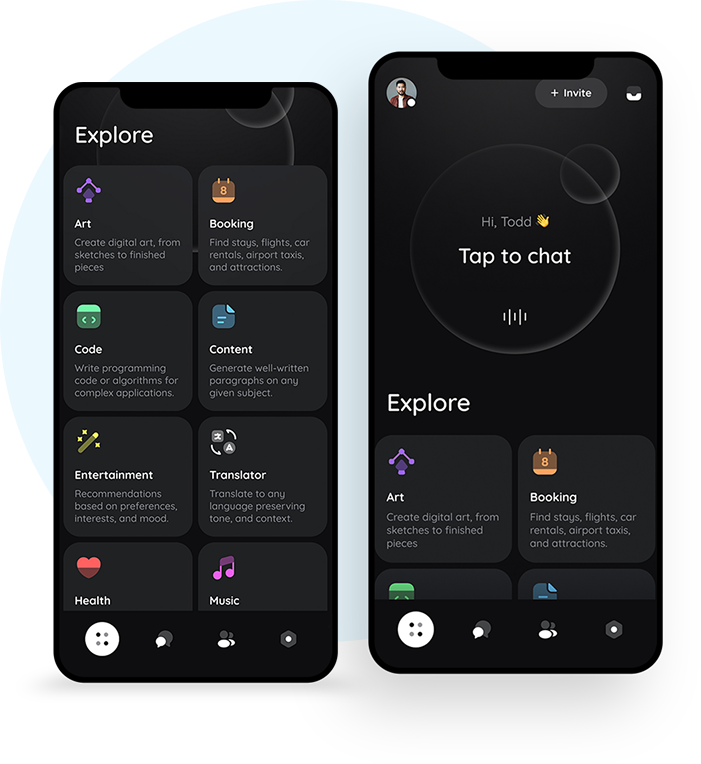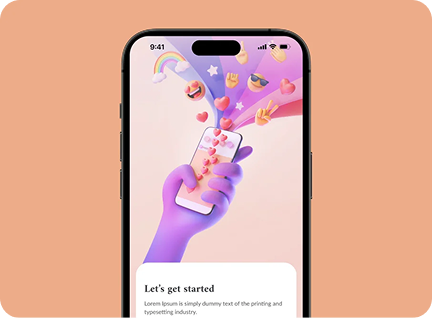Choosing between Flutter and React Native is one of the most important decisions you’ll make when developing a mobile app. This choice affects not just your initial development timeline and budget, but also your long-term ability to maintain, update, and scale your application as your business grows.
Understanding the fundamental differences
Flutter and React Native represent two different philosophies about cross-platform mobile development. Flutter, created by Google, uses the Dart programming language and compiles directly to native code for each platform. React Native, developed by Facebook, uses JavaScript and bridges between your code and native platform features.
This architectural difference has real implications for performance, development experience, and long-term maintenance. Flutter’s approach provides more consistent performance across different devices because it doesn’t rely on bridge communication between JavaScript and native code. React Native’s bridge architecture can introduce performance bottlenecks in certain scenarios, though recent improvements have addressed many of these concerns.
The learning curve varies significantly between the two frameworks. React Native leverages JavaScript, a language familiar to millions of web developers worldwide. This makes it easier for existing development teams to transition to mobile development and easier to hire developers with relevant skills.
Flutter requires learning Dart, a language specifically designed for building user interfaces. While Dart is relatively easy to learn for experienced programmers, the smaller community means fewer available developers and learning resources compared to JavaScript.
Performance analysis in real-world scenarios
Performance differences between Flutter and React Native become apparent in specific use cases rather than general application development. For business applications with standard features like forms, lists, and basic animations, both frameworks perform adequately on modern devices.
Flutter’s compiled nature provides advantages in graphics-intensive applications, complex animations, and scenarios requiring consistent 60fps performance. Apps with custom UI components, complex visual effects, or real-time data visualization often perform better with Flutter’s rendering engine.
React Native excels in applications that heavily integrate with platform-specific features and third-party services. The mature ecosystem of libraries and packages often provides ready-made solutions for complex functionality, potentially offsetting any performance disadvantages.
Battery usage can vary between frameworks depending on the specific features your app uses. Flutter apps may consume slightly more battery during intensive graphics operations, while React Native apps might use more battery when frequently bridging between JavaScript and native code.
Startup time and memory usage are generally comparable for business applications, though Flutter apps may have slightly larger file sizes due to including the Flutter engine. This size difference is usually negligible for most business use cases.
Development experience and productivity considerations
The development experience varies significantly between Flutter and React Native, affecting team productivity and project timelines. React Native’s JavaScript foundation provides immediate advantages for teams with web development backgrounds. Developers can leverage existing knowledge of React concepts, JavaScript debugging tools, and familiar development workflows.
Flutter’s development experience centers around its comprehensive widget system and excellent tooling. The Flutter Inspector provides visual debugging capabilities that help developers understand widget hierarchies and identify UI issues quickly. Hot reload functionality in Flutter is particularly robust, allowing developers to see changes instantly without losing application state.
Code sharing strategies differ between the frameworks. React Native allows significant code sharing between web and mobile applications when using React for web development. Flutter’s approach focuses on sharing code between mobile platforms, with web and desktop support as additional deployment targets rather than primary development considerations.
Testing approaches vary based on framework architecture. Flutter provides comprehensive testing tools including unit tests, widget tests, and integration tests. The framework’s deterministic rendering makes UI testing more reliable and consistent across different devices and environments.
React Native testing requires different strategies for JavaScript logic and native components. While unit testing JavaScript code is straightforward, testing native integrations and platform-specific behavior can be more complex.
Business impact and strategic considerations
The choice between Flutter and React Native affects various business aspects beyond initial development. Time-to-market considerations favor React Native for teams with existing JavaScript expertise, as the learning curve is gentler and development can begin immediately.
Flutter may require additional time for team training but can accelerate development once developers become proficient with the framework. The comprehensive widget library and consistent development patterns often lead to faster feature development after the initial learning period.
Maintenance costs vary based on application complexity and team structure. React Native applications may require more platform-specific adjustments as the frameworks and operating systems evolve. Flutter’s approach of rendering everything through its own engine typically requires fewer platform-specific modifications.
Market reach considerations affect framework choice for global applications. React Native’s mature ecosystem provides better support for complex internationalization requirements and diverse market needs. Flutter’s growing ecosystem is rapidly catching up but may lack specialized solutions for certain geographic markets or industry requirements.
Long-term strategic planning
Platform evolution affects both frameworks differently. React Native’s close ties to React ensure continued innovation and community support, but also mean that major React changes could require significant application updates. Flutter’s independence from other Google frameworks provides stability but relies entirely on Google’s continued investment.
Ecosystem maturity influences long-term viability. React Native’s established ecosystem includes extensive third-party libraries, development tools, and community resources. Flutter’s newer ecosystem is growing rapidly but may lack specialized solutions for niche requirements.
Team scalability considerations affect framework choice for growing organizations. React Native’s use of familiar web technologies makes it easier to scale development teams and cross-train developers between web and mobile projects. Flutter’s specialized approach may require dedicated mobile developers but can lead to more consistent and predictable development processes.
Making the decision for your business
Choosing between Flutter and React Native requires honest assessment of your specific circumstances rather than following general recommendations. Consider your team’s current skills, project requirements, and long-term business objectives.
Choose React Native if your team has strong JavaScript and React experience, you need extensive third-party integrations, or you’re building applications with complex business logic that benefits from code sharing with web applications.
Choose Flutter if you prioritize consistent UI across platforms, need high-performance animations or graphics, or want to minimize platform-specific development and testing overhead.
Consider starting with a small pilot project to evaluate how each framework fits your team’s working style and project requirements. This hands-on experience often provides more valuable insights than theoretical comparisons.
The most important factor is building something that serves your users effectively and can be maintained successfully by your team. Both frameworks are capable of creating successful applications when chosen and implemented thoughtfully.
Quality Assurance & Continuous Improvement
Quality is at the core of every build. Each version undergoes both manual and automated testing to detect bugs, ensure device compatibility, and improve user experience. Post-launch, we monitor performance and offer full-cycle support for upgrades and scaling.
Conclusion: We Build Apps That Deliver
If you’re looking for a partner who treats your app like their own, with a proven development process, real collaboration, and technical precision — Software Orbits is ready to build with you.
📞 Contact us today to schedule a consultation.


